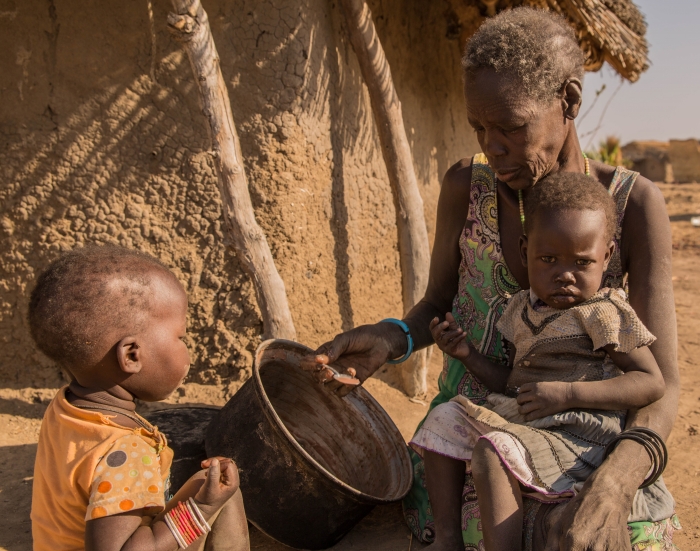More than 7 million people are at risk of severe hunger in South Sudan in the coming months, according to a report by UN humanitarian agencies.
The Integrated Food Security Phase Classification (IPC) report released in Juba today also states that about 155,000 people in Unity, Jonglei, Upper Nile, and Central Equatoria regions are likely to suffer from famine between May and July.
Addressing the launch of the report, the United Nations Resident, Humanitarian Coordinator Alain Noudehou said that without sustained humanitarian assistance and access almost two-thirds of the population will need food aid in 2018.
“According to the report, we expect to face the toughest year on record which is 2018 compared to January 2017 where we seeing a 40 percentage increase on the population facing insecurity in the post-harvest period,” Noudehou said.
Adnan Khan, World Food Program WFP Country Director said, “The situation is deteriorating with each year of conflict as more people lose the little they had. We are at the lean season when harvest run out is expected to start much earlier than usual.”
“Unless we can preposition assistance rather than mount a more costly response during the rains, more families will struggle to survive,” he added.
Food and Agriculture Organisation (FAO) Representative in South Sudan Serge Tissot described the situation as fragile saying if farmers are supported, the situation could improve.
“The situation is extremely fragile, and we are close to seeing another famine. The projections are stark. If we ignore them, we’ll be faced with a growing tragedy. If farmers receive support to resume their livelihoods, we will see a rapid improvement in the country’s food security situation due to increased local production.”
Isaiah Chol Aruai, the chairman of the National Bureau of Statistics said absence of humanitarian assistance and with restricted access in 11 counties namely Leer, Mayendit, Ayod, Nyirol, Uror, Koch, Panyijiar, Fangak, Pibor, Longochuk, and Wau, the population there are likely to face famine.
“If the current drivers of food insecurity worsen throughout 2018, and in the absence of humanitarian assistance, there is a heightened risk of famine in areas where large populations are already experiencing severe food insecurity,” said Chol.
“To prevent populations falling into the catastrophe (famine), sufficient and sustained multi- sectional humanitarian assistance and unhindered humanitarian access and close monitoring of the worst affected area is required,” he added.
According to the report, if the current situation persists the number of hungry people is expected to rise.
Last year in February, the UN declared famine in two states but said the situation eased a few months later.
The U.N. humanitarian response for South Sudan has received less than 4 percent of its funding budget for 2018.



